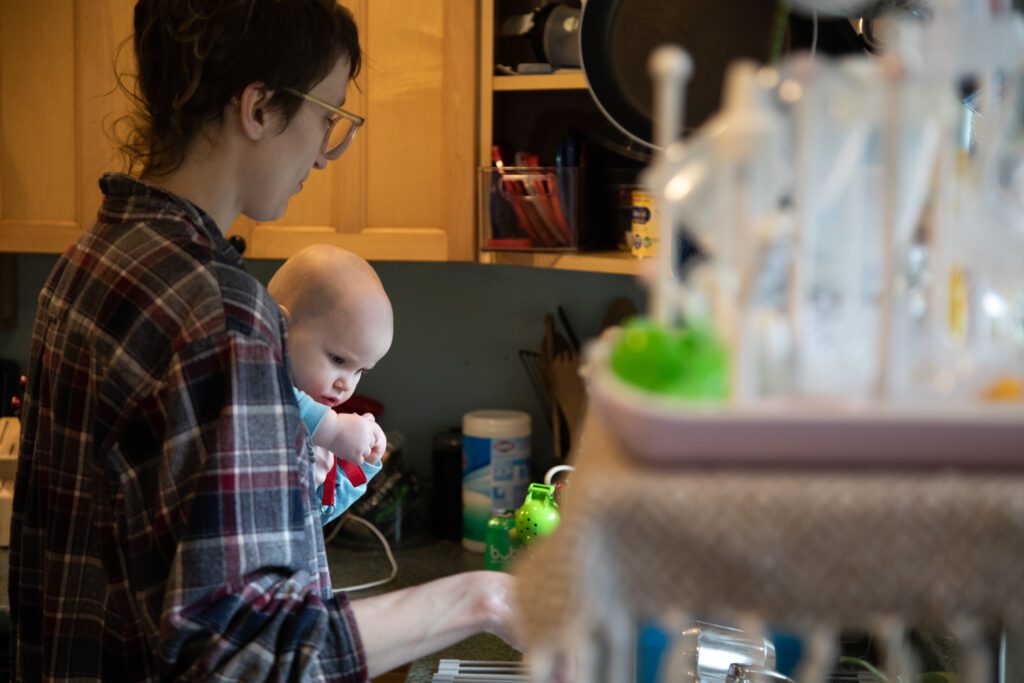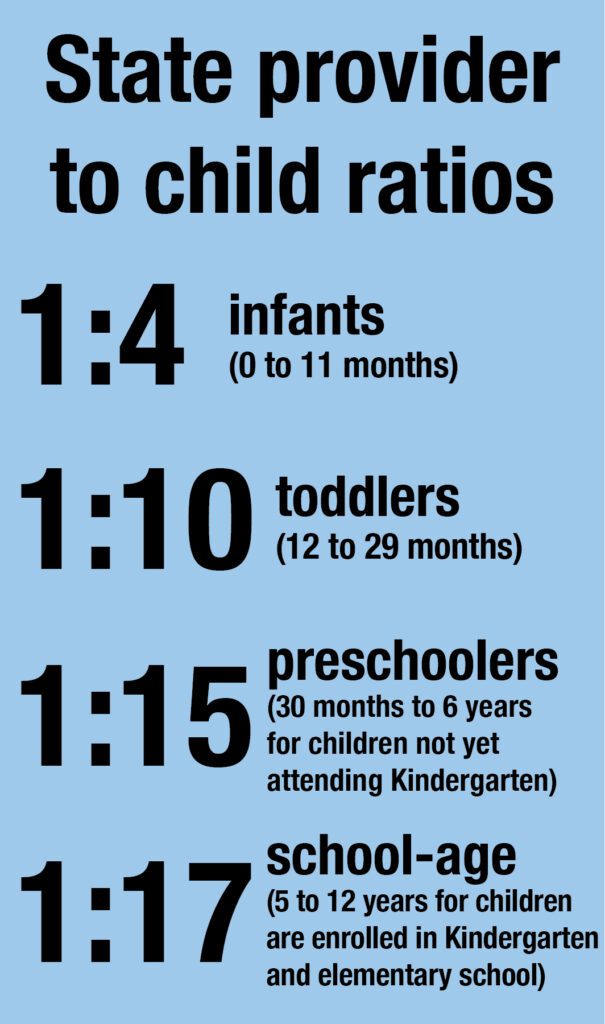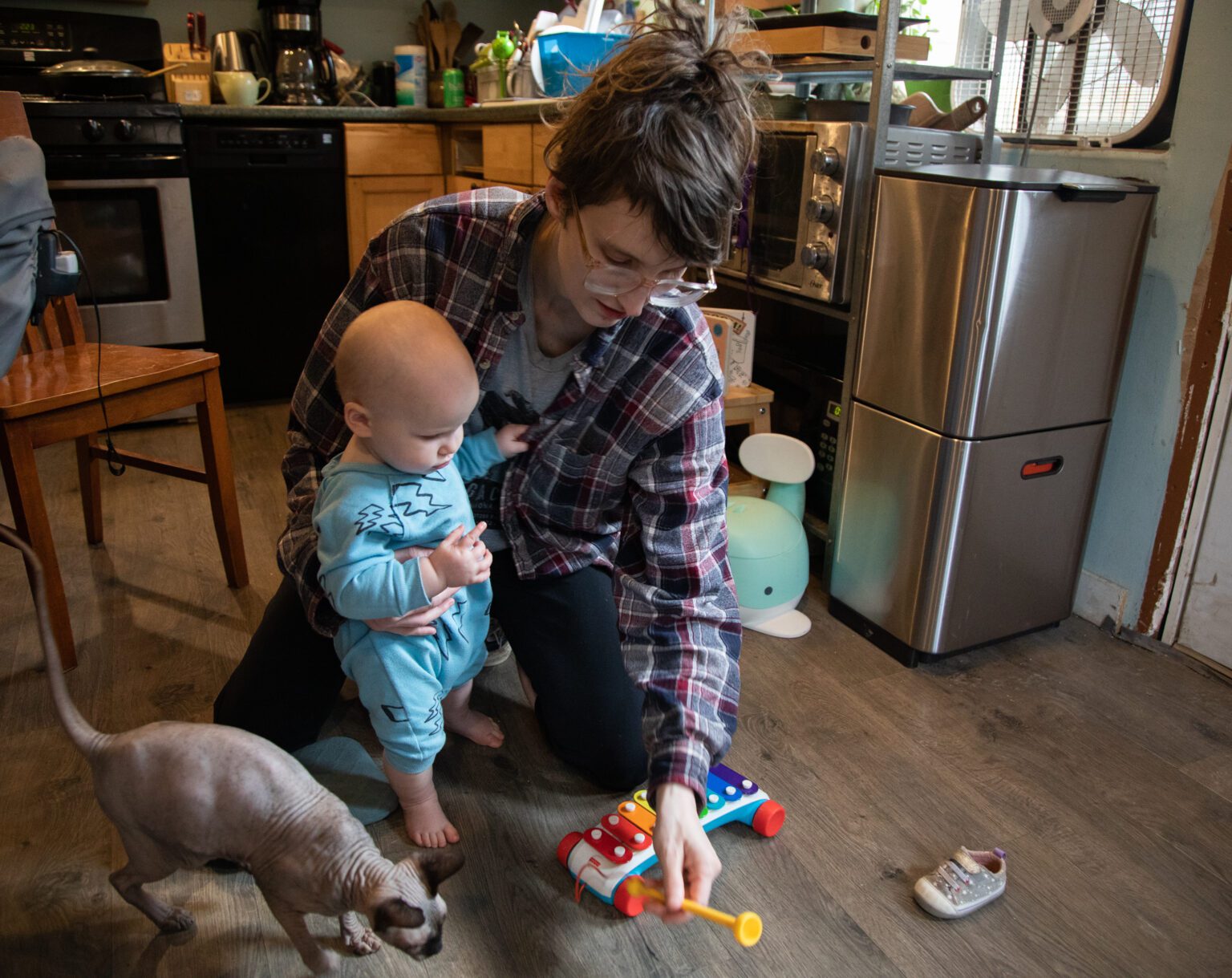Editor’s note: Child Care-less: A search for solutions is a two-part series about the child care landscape in Whatcom County. Part one focuses on issues facing parents and providers. Part two will detail the ways people at the local and state level are addressing the county’s child care desert.
The Whatcom County Healthy Children’s Fund passed by a mere 20 votes in the November 2022 election, and for parents and providers across the county, relieving the burdens of child care can’t come soon enough.
A draft plan to distribute tax money from that fund, which will bring in about $10 million in 2023, will be presented to the Whatcom County Council on Feb. 21, with a vote scheduled a month later.
The fund seeks to lower financial and logistical barriers to child care, including providing funding for existing facilities, opening new facilities — particularly in the north and east county — and bolstering wages for child care workers.
While the number of child care slots in the county increased between 2017 and 2022, the number of providers has decreased. Coupled with population-fueled demand for child care, the county has about a 5,000-slot deficit and a plethora of waitlisted names.
Parents who do manage to make it off a waitlist may pay as much as $30,000 a year for child care. Or, face quitting their jobs.
The high cost of child care doesn’t guarantee a profit for many facilities — they may not even break even. Staff turnover, exacerbated by the COVID-19 pandemic and low wages, is a constant battle, as highly educated providers find it difficult to justify a $14–16 per-hour paycheck for physically, mentally and emotionally demanding work.
In the face of so many challenges, the Healthy Children’s Fund is a glimmer of hope for parents and providers. But a larger sense of dread — that it’s too little, too late — lingers in addressing a problem of child care described by one local father as “uniquely American.”
Still, any relief is welcomed.
“I’ll take the Band-aid,” said Nikki D’Onofrio, a 37-year-old Bellingham mother of two.
Parents scrape together patchwork plans
The D’Onofrios thought they were ahead of the game when they began searching for infant care for their first son, Ray, five months into the pregnancy.
They didn’t expect to be up against sometimes yearslong waitlists. The child care facility the soon-to-be-parents were eyeing had people on the waitlist who weren’t even pregnant yet.
“You could sign up online and either put your baby’s birth date, due date, or say you’re trying. And to me, that seems really unrealistic for a lot of people. I had no idea I’d have to tell a stranger I was trying to get pregnant in order to get on a child care waitlist,” D’Onofrio said.
Facilities that accept infants are in high demand, but low supply. Whatcom County has only a handful of places that accept children under 12 months, and a state ratio mandates one provider per four infants.
“It is a uniquely American problem, child care,” Bellingham father of three Matt Hinz said. “Every other civilized country gives you a year after your kid’s born to stay home, and we don’t do that here. Instead, we do this thing called infant care, which is strange and unique.”
Strange, unique — and exclusive, both in cost and availability.
One year of infant care can cost more than $13,000, according to a 2021 community health impact assessment by Whatcom County Health and Community Services. By comparison, a year of in-state tuition at Western Washington University at the time of the assessment cost $9,325. Pair that with multiple children, and child care costs can start to look like a year’s salary.
The same study predicted the number of child care slots for kids under 5 would need to triple by 2025 to meet demand. Relative to Bellingham, the lack of available child care deepens in the county’s rural cities. But the entire county is considered a child care desert.
“We got confirmation over the phone that she had cleared the waitlist and that she was going to start that Monday. I kid you not, I celebrated that information as though Annabelle had been accepted into university.” — David Keeler, Bellingham father
When Bellingham father David Keeler, 33, and his wife, Nicole, found out they were pregnant in January 2021, they almost immediately began putting their names on child care waitlists.
Annabelle was born in October 2021, and because they were still on waitlists, the new parents began to formulate a patchwork plan for when their paternity and maternity leaves ran out. The Keelers relied on the flexibility of their employers one day a week and a network of three Western Washington University students the other four days.
“We couldn’t get five days of coverage pulled together,” Keeler said.
Finally, Keeler heard from a child care facility that it may have room for Annabelle when she turned 1. Her birthday was on a Friday and if all went to plan, she would begin day care the following Monday. The parents anxiously awaited a call back.
“We got confirmation over the phone that she had cleared the waitlist and that she was going to start that Monday,” Keeler said. “I kid you not, I celebrated that information as though Annabelle had been accepted into university.”
Hinz and his wife, Kate Kershner, had their eldest son seven years ago. Kershner, as a freelance writer, had the ability to mold her work schedule around when child care space was available for Gus, but they could only afford a few days a week.
When their second child, Frankie, was born two years later, Kershner had to take a year off from work.
They were on a waitlist for infant care for their third child, Sammy, for a year and a half. “If you do the math, that’s much longer than nine months. So that means we had to magically predict we were going to have a baby and get on a waitlist,” Kershner said.
When Sammy was 3 months old, a spot opened, but only for one day a week. While Kershner’s career path allowed for that flexibility — she wasn’t working at the time — it’s unfathomable how other parents, or even single parents, can reconcile a single day of child care with a full-time job, she said.

Laura Klotzer, 32, faced a difficult choice when her sister, who doubled as a babysitter, could no longer care for Klotzer’s 10-month-old, Ember. This month, she decided to quit the highest-paying job she ever had after it became too difficult to find and pay for child care.
Klotzer’s employer was as accommodating as could be — she went from working full-time as a delivery driver to 20 hours a week — but the first-time mother was constantly stressed from calling out of work to deal with child care issues.
“Any child care I could find was the same that I was making,” Klotzer said. “If I paid someone a decent amount, I’d be going to work for like a couple bucks an hour. So what’s the point?”
Klotzer is not exaggerating the cost. Hinz and Kershner spend $30,000 a year on child care, not including summer programs. The Keelers pay $18,960 annually for child care, more than their mortgage. The D’Onofrios pay around $918 a month for three days of child care per week for their youngest, Clark; their other son is in Promise K, a free early learning program for 4-year-olds provided by Bellingham Public Schools.
One might think the staggering cost of child care would generate a profit for the number of private facilities around the county. But most places are barely breaking even.
Low wages, long hours perpetuate turnover
Kids Korner Learning Center Director Dawne Sheppard has worked for the facility for 30 years. On a typical day, the facility cares for up to 42 kids. Prior to COVID-19, they had up to 58 kids per day, but they decided to keep their capacity at the lower number even as pandemic restrictions waned. The business also qualified for some COVID grants, as incentives to remain open.
“It’s really hard to get staff, so having less kids, we need less staff, and having less staff, financially, it worked out to be about the same for us,” Sheppard said. “It makes it a little bit easier to keep all the classrooms open and running.”

The smaller capacity is also to the staff’s benefit — lower ratios than those set by the state prevent teachers from becoming too overwhelmed. Sheppard said wages at Kids Korner are comparable to other facilities in the community: Lead teachers make $19.56 an hour and the lowest-paid employees make $17.39.
“We like to break even every month. If there’s a profit at the end of the year, that’s a bonus for the owners,” Sheppard said.
Sheppard said what providers need most is to find staff that will stay. Some Kids Korner staff have been at the facility for 13 to 14 years, and Sheppard has a lower turnover rate compared to other facilities.
But it’s common for early childhood educators to graduate to jobs with better pay and benefits in elementary and secondary schools.
Kyle Venooker, 31, left the early childhood education field after five years to do just that.
“It was impossible to afford to live working as a child care provider,” said Venooker, who started at a Bellingham facility at $14.50 an hour. His coworkers either had a second job or a partner or spouse who was making significantly more to compensate. “That was pretty much across the board: either they were broke, or they were working 60 hours a week, or they had someone paying most of the bills.”
Venooker is now certified to teach high school, where teachers have more protections due to unions. They also pull a higher salary.
“If teaching preschool I could’ve made what I make as a teacher, I never would have left,” Venooker said. “I would’ve stayed because I loved the work.”
Anita Zvezda, 23, worked as an early childhood educator for a day care for just six months. When the lead preschool teacher went on maternity leave, Zvezda was asked to step into the role before she was properly licensed. Though she was acting as a “lead,” she wasn’t paid for the new title until she completed the required hours of training.
“I loved the kids, and it was a labor of love for a long time. They just asked so much of us and didn’t have the resources to keep the staff afloat,” Zvezda said.
“These are people who have college degrees, who are highly educated, highly skilled, highly talented, and creative. People who are demonstrating ingenuity going above and beyond, and giving so much of themselves,” Venooker added.
He said parents were often shocked when they found out how little child care workers were making. Many parents believe the low wages and meager benefits are a leading cause of the child care desert because providers are leaving the industry — and the flow out has been exacerbated by COVID-19. Parents don’t blame them. It’s a simple equation: poor pay and conditions lead to fewer providers, which leads to fewer available slots.
“I felt bad going down a little bit in numbers,” Sheppard said of Kids Korner’s reduced capacity. “Staffing-wise and financially, it made no difference to us whether we had more slots or not, and it’s because it’s so difficult to find staff. Right now there’s no incentive [to increase the number of slots].”
Parents don’t fault facilities, either. A child care facility is, simply, expensive to operate.
“I feel like the issues that we’ve had are the same issues that have been around for quite a few years, now. There’s always financial issues, not being enough slots open,” Sheppard said. “I honestly don’t know what the solution is for it all. It’s pretty overwhelming.”
Overwhelming, yes, but lawmakers and experts have ideas. A multi-faceted approach to recruiting providers, lowering costs, supporting facilities and expanding access needs to be taken, and the Healthy Children’s Fund hopes to begin to address just that.
Part two details the ways people at the local and state level are addressing the county’s child care desert.
This story was updated to clarify that Promise K is an early learning program not a preschool. The story was updated on Feb. 16, 2023, at 10:53 a.m. to reflect this change.



